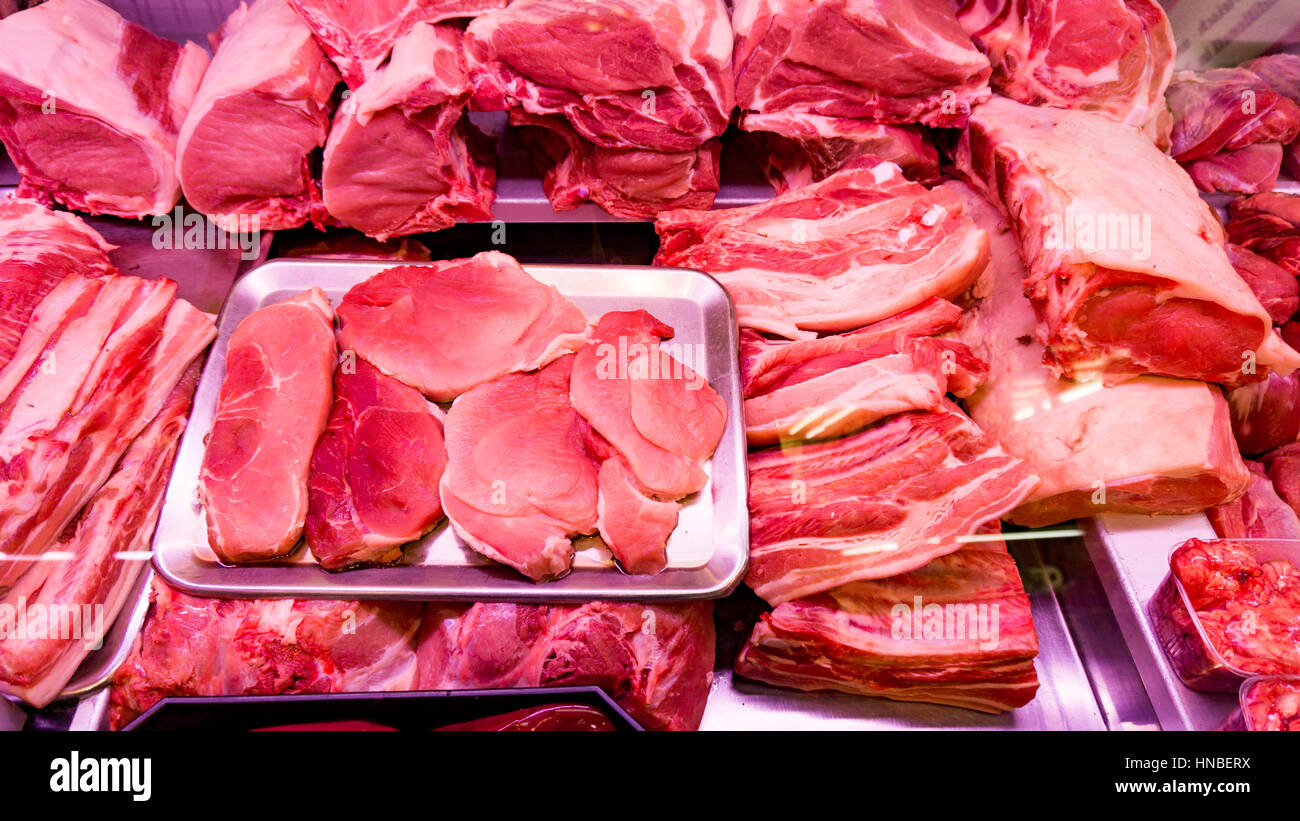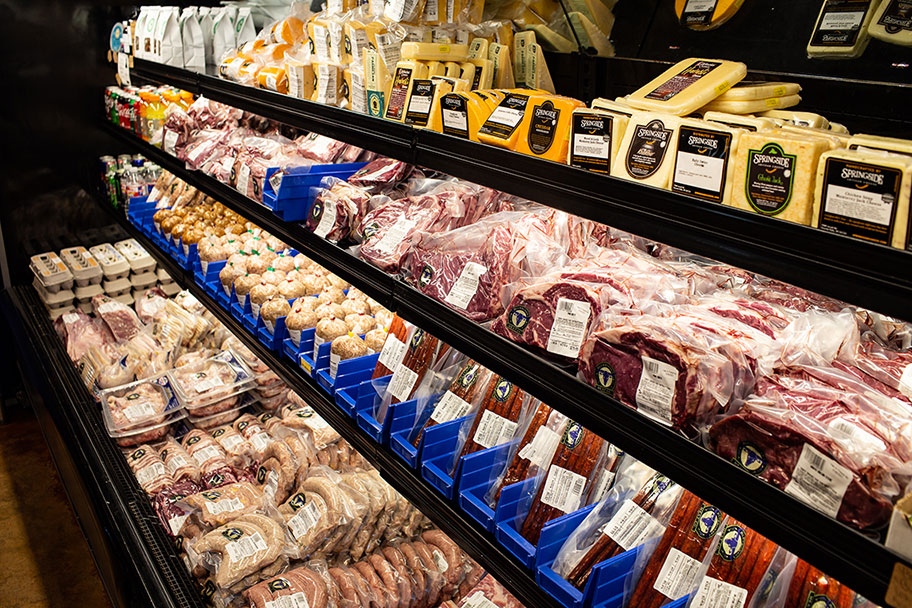Bagley Farms Meat Market: Your Premier Selection for Fresh Citizen Meats
Your Comprehensive Source for Expert Tips on Browsing the Meat Market Scene and Making Enlightened Acquisitions
Browsing the world of meat buying can frequently feel like a complicated puzzle, with numerous cuts, qualities, and tags adding layers of complexity to the decision-making procedure. By mastering the art of picking fresh, high quality meat and learning to involve properly with butchers, individuals can not only boost the flavors on their plate yet additionally make confident decisions that straighten with their values and preferences.
Understanding Different Cuts and Grades
When it comes to acquiring meat, understanding the differences between various cuts and grades is necessary for making educated options at the market. The cut of meat refers to the certain muscle group from which the meat is sourced, while the quality is a quality classification based on aspects like marbling, tenderness, and maturity of the animal. It's important to think about the food preparation technique when selecting a cut and quality of meat-- for instance, well-marbled cuts like ribeye are excellent for grilling, while leaner cuts like sirloin may be much better matched for roasting or braising.
Choosing Quality and fresh Meat
To guarantee optimum taste and security in your dishes, it is important to carefully choose fresh and high quality meat when purchasing at the marketplace. When choosing fresh meat, search for cuts that have a lively color, firm appearance, and are damp but not slimed. The shade of the meat must specify to the type you are acquiring; as an example, beef must have an intense red hue, while pork needs to be extra pinkish. Avoid meat with any kind of off-smells, discoloration, or extreme fluid in the packaging, as these can be signs of putridity.
Checking for suitable labeling, such as USDA qualities or certifications, can further guarantee you of the meat's top quality and safety. By being alert in your selection process, you can appreciate delicious and risk-free meals made from fresh, premium meat.
Decoding Labels and Certifications
Recognizing the tags and certifications on meat products is important for making educated choices concerning the quality and origin of the meat you buy. When navigating the meat market scene, it is essential to look for labels such as "USDA Certified Organic," which indicates that the meat was created complying with stringent natural criteria without using synthetic pesticides, antibiotics, or hormones. Another essential label to look for is "Grass-Fed," which implies the animals were fed a diet plan mostly including grass or forage. This label frequently suggests a leaner product with higher levels of omega-3 fats.


Qualifications like "Animal Welfare Accepted" or "Licensed Humane" indicate that the pets were raised in gentle conditions, with accessibility to outside spaces and moral treatment. On the various other hand, "Non-GMO Job Verified" indicates that the meat originates from animals that were not fed genetically changed organisms. By understanding these qualifications and labels, customers can make more lasting and ethical options when purchasing meat items.
Involving With Butchers for Guidance
Making informed selections about the meat you acquire can be even more boosted by seeking support from experienced butchers that have important expertise regarding different cuts, high quality, and sourcing techniques. Butchers are proficient professionals who can give insights into the very best cuts of meat for specific meals, advise alternative options based read the article on accessibility or spending plan, and deal guidance on appropriate handling and storage space to take full advantage of quality and taste.
Engaging with butchers enables clients to ask inquiries concerning the source of the meat, including whether it is in your area sourced, organic, grass-fed, or sustainably raised. By cultivating a relationship with a relied on butcher, consumers can gain a much deeper understanding of the meat they acquire, making certain that it aligns with their values and preferences.
Additionally, butchers can share cooking pointers, dish recommendations, and even butcher special cuts to satisfy private choices. Their experience extends beyond just offering meat; they can help in meal planning, part sizing, and offer suggestions on complementary ingredients to produce tasty find and all-round meals - Bagley Farms Meat Market. By leveraging the understanding and experience of butchers, consumers can make more informed choices when browsing the meat market scene

Maximizing Worth and Budgeting
When thinking about making the most of worth and budgeting in the meat market, it is vital to assess the price per serving and check out economical cuts that still use great taste and quality. By recognizing the cost per serving, customers can make informed choices concerning which cuts of meat offer the ideal value for their budget plan.
An additional technique for budget-conscious customers is to capitalize on sales, discount rates, or mass investing in options. Getting wholesale and freezing parts for later usage can help decrease total prices per serving. It is likewise valuable to build a connection with neighborhood butchers or meat suppliers, as they might offer special offers or price cuts to loyal customers. By bearing in mind expense, discovering alternative cuts, and leveraging discounts, consumers can stretch their meat budget plan without giving up top quality.
Final Thought
Finally, comprehending the different cuts and grades of meat, choosing fresh and quality products, decoding tags and certifications, looking for support from butchers, and making the most of worth and budgeting are necessary actions for navigating the meat market scene and making educated purchases. Bagley Farms Meat Market. By following these expert pointers, customers can make knowledgeable decisions when purchasing meat and guarantee they are obtaining the very best value for their money
When it comes to acquiring meat, comprehending the differences between numerous cuts and qualities is vital for making informed choices at the market. The cut of meat refers to the details muscle mass group from which the meat is sourced, while the quality is a high quality designation based on variables like marbling, tenderness, and maturation of the pet. It's essential to consider the food preparation method when picking a cut see post and quality of meat-- for example, well-marbled cuts like ribeye are wonderful for grilling, while leaner cuts like sirloin may be much better suited for toasting or braising.Understanding the tags and certifications on meat products is crucial for making informed choices about the top quality and origin of the meat you acquire. When navigating the meat market scene, it's vital to look for labels such as "USDA Qualified Organic," which indicates that the meat was generated following rigorous organic requirements without the use of artificial pesticides, anti-biotics, or hormones.